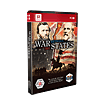
Reviewed: 26 FEB 2012 by Chuske
For me this is the best of the American Civil War games out there. This seems the least bugged and most robust and plays quite quickly. It's not as detailed as the other ACW sims (this one really puts your in role of Lincoln or Davis) and perhaps not quite as good graphically but it has the best manual and interface (although could still be a lot better very few wargames get this right). Where this game wins is in PBEM play, it is really tense and well balanced with many twists and turns and reproduces historical decisions and outcomes very well. If this game was more moddable and had more scenarios it would be 5 stars. Really hope Gary returns to non-WW2 in the future as this is great first foray out of his main period.
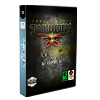
Reviewed: 16 FEB 2012 by MrToad
It's such a pleasure to play Panzer General again! Some of the maps are essentially identical to the originals, but the additions and tweaks are almost invariably improvements. It is a very fine fusion of PG and PGII, with prettier graphics and nice gameplay. The increased complexity has only slightly reduced the "fun" level, and the replayability is still very high. I miss the original voice actor, but the new one is quite good, and somewhat more amusing as well. Occasionally, he has more than a little resemblance to Siegfried, of 'Get Smart' fame. My congratualtions to everyone involved, on a terrific piece of work!
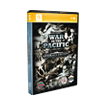
Reviewed: 14 FEB 2012 by GaryChildress
WitP-AE is THE magnum opus of all wargames, a true masterpiece of research and detail. The game is not for the faint of heart, however. It is easy to become intimidated by the depth and scope of the game which covers the entire Pacific war from the West Coast USA, westward to the tip of the horn of Africa. You'll be in command of every ship, plane and ground unit that participated in the war. The attention to detail is astounding. Virtually every conceivable aspect of the war is modeled in the game down to the effect of radar, weather, disease, intel reports, drop tanks, resource production, repair ships... Every unit, whether it be aviation engineers, landing barges or float planes plays its own significant and special role in achieving victory. It's all in there and everything serves its purpose as you fight your way across a vast map encompasing almost 1/2 the entire globe.
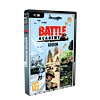
Reviewed: 30 JAN 2012 by robc04_1
Version Reviewed: 1.7.0 What I like: Deep combat, extra objectives for skilled players, abundant content. Not So Much: Many unit details and combat variables are hidden. Other stuff you may like: Very moddable. Slitherine play by email system. The Verdict: 7/10 Introduction After gorging myself on some lightweight strategy games during the Steam holiday sales (like Swords and Soldiers HD, Might and Magic: Clash of Heros, etc...), I've had a hankering for something more serious in the war genre. Battle Academy is a turn-based tactical WWII strategy game where you can command various infantry, tank, transports, etc across a tile based battlefield. For variety, the game has three campaigns covering North Africa, D-Day and the Ardennes. The following review is based on playing all of the Western Desert Campaign and part of the Battle For Normandy. After not having too much experience with Matrix Games and Slitherine, my last two titles have come from their catalog. It's just a coincidence - I'm not a shill - I promise! Getting Started The first campaign serves as a tutorial mission, walking you through the basics of the game. Pop up messages are used to direct your actions. The mechanics of the game are very simple; click your unit, click the target tile or enemy and, if necessary, click one of the valid commands that pops up. You can control-click to bring up a unit information window and hover over items to get more information. The manual does a pretty good job at introducing the main concepts of the game, but fails to explain many of the underlying mechanics that would be useful while playing. This wouldn't be a problem if the game's UI provided those details, but unfortunately it does not. This doesn't make Battle Academy unplayable by any means, but I prefer to understand how things work beforehand. There are helpful people on the forums to answer questions, but an informative UI would be much better. Game Play Each scenario starts with a brief comic-book style introduction, describing the scenario and what to expect. This is followed by a force selection screen which shows your allotted units and where extra units are usually available for purchase to customize the variety of troops you will command in this scenario. There isn't a core group of units to carry over from one scenario to the next. Although in one of the expansions, you can carry units through the campaign. This is neither here nor there though since we are playing the base game right now. After your forces are selected, the game proceeds to the briefing map which displays an overhead view, accompanied by the objectives. This does add some flavor to the process as you can imagine standing around a table looking over the map with your commanding officers. Victory conditions involve capturing or holding victory locations. Additional achievements are given for tasks such as losing less then a certain number of units, killing at least 'x' enemy units, destroying all enemy units of a certain type, and/or keeping the enemy from advancing beyond a certain point. Some of these achievements have time constraints for added pressure. The optional achievements creates a pretty good system for making the scenarios beatable for less-skilled players, but more challenging for those up to the task. In other games, I'm not fond of having to replay scenarios many times to play the full game. I can choose to replay to get all the achievements (now or later), or I can move on. I do think it would make more sense to have the force selection screen after seeing the objectives. If you are expecting to encounter a Tiger, you might want to bring extra big guns to take it out. What are our objectives General? I Said Jump Soldier! Now we get to the meat and potatoes. As one would expect, each unit uses an appropriate movement rate and method (such as walking for infantry or tracked for tanks). The movement rate is determined by the amount of action points (AP) the unit has, and it's method determines the cost in AP to enter each type of terrain tile. While a wheeled unit is faster on open roads, it can't enter rough terrain. Before giving the move order you can review the AP cost. Overall the system works, giving each unit an appropriate feel. For additional control, units can be ordered to hunt, which costs more AP, but avoids the movement accuracy penalty applied to shooting and makes the unit harder to spot. I Can See You, Can You See Me? Line of sight (LOS) is handled in a typical manner: each unit has a spotting range, and certain terrains, like forests or buildings, interrupt the LOS. Some terrain allows infantry to hide in an effort to ambush oncoming enemies. However, Battle Academy adds an interesting twist: only infantry can spot these units in hiding, and only when adjacent to that tile. This makes infantry very valuable because without their support, your high powered tanks will be reduced to rubble by satchel charge- carrying, bazooka-toting enemies. Specialized scout infantry are available in some scenarios, which have the ability to detect potential ambushes from two tiles away. Also, units on hills don't give away their location to those below until they fire, so take that high ground! Be Afraid, Very Afraid. It is hard for a wargame to be taken seriously if there isn't any representation of morale, and Battle Academy executes this well. In the game, as I expect in real life (I've never been a soldier), shooting at a unit decreases its morale - a lot if it actually kills a member of the squad. Even a shot at a tank that deflects off of the armor tests the courage of those inside. Once the morale of a unit drops below the 1st threshold, it is suppressed and loses its ability to initiate an attack. Dropping below the 2nd threshold causes the unit to surrender to any adjacent unit that attacks it. Once things really go to hell, the unit will just rout. Since there doesnt seem to be a limit to the number of times a unit can retreat within a single turn, hunting the enemy down can feel like whack-a-mole (I thank Troy Goodfellow at Flash of Steel for that expression when he was describing Hegemony Philip of Macedon). The retreating never gets out of hand but is sometimes slightly annoying. Learning From Your Experiences. As units inflict casualties, their experience increases. Veteran units have increased morale, while Elite units further improve their moral and can obtain new skills - such as a sniper shot that automatically kills one member of an enemy squad. With increased morale, these experienced troops can better withstand the stresses of combat before succumbing to their fear. Experience would have a greater impact if units could be carried from scenario to scenario, but still has a noticeable effect in longer scenarios where there is more time to level up and additional enemies to attack. Combat! Combat is the heart of any tactical wargame, and Slitherine's engine doesn't disappoint. The factors are logical and detailed. Units are rated for hard attack (vs armored units), soft attack (vs non-armored units), and armor (defense vs hard attacks). The hard attack is actually based on several factors: (1) minimum & maximum damage rolls (2) the accuracy at different distances (3) the ability to penetrate armor at different distances. Likewise, the soft attack is determined from factors 1 & 2. The armor is rated differently for the front, sides, and rear. Try to avoid the heavy armor in the front of some tanks by attacking from the sides or rear. Before engaging the enemy, your unit must navigate close enough so they are within their weapon's range. They must survive possible attacks of opportunity by the enemy as they approach. If the target or their allies saved shots from the prior turn, your unit may be in for quite a surprise. All units get at least one attack of opportunity so there is never a free
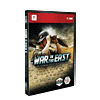
Reviewed: 29 JAN 2012 by jeffdez
Never written a review before. I love WWII games - especially WAR IN RUSSIA. When I saw this advertised, I was a doubter. $80 for a game - too much? Saw this reduced over Christmas to $59 - I bought it. Was concerned my minimum specs fell below the 128MB video card (have 96MB). Installation was a breeze, & was up & playing in just a few minutes. Started out playing about one hour/day. Then 3, then 5, & now I play at least 6 hours/day. I can't get enough - love this game. My wife hates me playing & lets me know everyday. I'm 58 & I now for the 1st time look forward to retiring - me & War in the East...oh yeah the wife too.
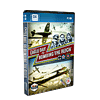
Reviewed: 29 JAN 2012 by Turner
All-in-all a excellent strategy game. The only issue holding this game back from a 5-star rating is the awkward user interface. I know this is being worked on and a patch is to be released that improve the UI a lot, but release date is unknown at the time of this writing. This is a game for experts, the level of detail is engrossing and a beginner who do not know much of the history of WW2 air combat is likely to be overwhelmed. To someone who know the history, this title is unmatched in detail and accuracy.
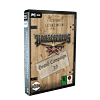
Reviewed: 26 JAN 2012 by godsmackrrc
If youlike playing Panzer Corps, then you MUST play the "Grand Capaign"s. The '39 GC is a nice opening title for the expansions. The "-"s: you can't pick you starting core force, written-only briefings.

Reviewed: 26 JAN 2012 by godsmackrrc
This is a great game for the "Panzer General"-type fans. It's quite easy to play and get some minor victories, although the scenarios will be in fact hard to master. On the downside, the victory points system is quite simplistic (not taking into account anything else but the "flags"), the soundtrack is very limited and an encyclopedia with all units in the game would be a nice addition.

Reviewed: 16 JAN 2012 by Gridley380
The massive scale of this game can be a bit intimidating, but once you grasp the basics things move along very smoothly. This is by far the best and most detailed simulation I have ever played.

Reviewed: 16 JAN 2012 by deltaalpha111
Absolutely the best game I have ever played. IF you are looking for a game that taxes your organizational skills this is the game for you. The pacific war was a war of logistics and this game proves it. Love it.

Reviewed: 13 JAN 2012 by LPGamble
Gems like this keep me investing money in games trying to find hits.
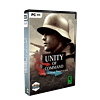
Reviewed: 5 JAN 2012 by myness
I purchased Unity of Command in hopes of finding a game with more historical depth than PanzerCorps, but a bit less daunting than War in the East. I was initially put off by the unit icons, but having read a positive review on the Wargamer, I decided to give this one a try. The interface is simple and intuitive, and the guided tutorial taught me all I need to know to get started. Bordered hexes indicate how far a unit may move and still attack, and a simple scroll of the mouse wheel shows hexes that may be reached using extended movement. Most unit details are apparent from the on board icon; others are available in a sidebar display. Simple keystrokes offer views of terrain, weather, objectives, or supply lines. Theater resources - airstrikes, improvements to your supply network, air supply, bridge construction/demolition, and partisans for the Soviets - are indicated by icons along the side of the screen. The review I read saw little purpose to the bridging options, but use them wisely. They may open opportunities for attack or defense, and can alleviate (or create) supply problems. The supply view is critical. Outrun your supplies or leave your supply lines open to the AI, and you will find your offensive running out of steam quickly. The supply mechanics demonstrate the simultaneous depth and simplicity of the game. The manual explains how supply points impact unit readiness, and how attenuated supply lines, weather, and terrain affect those lines. The supply view shows supply sources and assigns each hex a number, so you can easily see how your front line units will fair next turn when their readiness is calculated. Movement and combat are with a simple point and click. Hovering over an enemy unit provides casualty estimates and retreat probabilities. Units possess a number of steps rating their combat effectiveness, and you may also assign specialist steps - engineers, towed AT, recon, or heavy tanks - that augment a unit's capabilities. You can easily see a unit's status by the color of the circles on it's icon, representing its steps. While the interface is simple, determining where your best chance of a breakthrough may be and whether to sacrifice weaker units to attrite the readiness of an enemy unit make for a challenging game. Order your attacks incorrectly, and you will watch your chance to capture that objective slip by until next turn (I know this from personal experience). Many of the scenarios are quick-playing, but still challenging. Operation Uranus, for instance, is only 5 turns, but trying to get your attacks just right to capture your objectives on time (this is critical), sealing off as many German units as possible in Stalingrad, provides quite a bit of replay value. And dont give the AI an opening to take back an objective. Youve been warned. Speaking of the AI, I have played at least a dozen scenarios now, and finished two campaigns, and I find it offers a good game. It does have limitations. For instance, its a little too eager to seize supply sources. This is a good tactic generally, but you can almost bait it into exposing its own units to a quick encirclement. Then again, dont expect the historical reaction to the threat of encirclement in Stalingrad. And while it does display some aggression, the human and AI players for the various scenarios are fixed. I was a little disappointed in the campaign game, which is simply a series of linked scenarios, rather than a monster scenario for the whole campaign. The scenario tree does vary with your results, however, so this adds some variety. The campaign engine also tracks prestige, which can be used for reinforcements or specialist steps in later scenarios. Some scenarios offer access to OKW/Stavka resources. Deploying these units or specialist steps has a corresponding cost in prestige and impacts your level of victory, so choose them wisely. Overall, I am very pleased with this game, and look forward to more titles using this engine. If you have been looking for an accessible game that contains both historical and strategic depth, I highly recommend it. And now, back to the front. Im about to capture Rostov and seal off the remaining German divisions in the Caucasus
Select any combination of the criteria below to search the Games catalog.
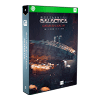
Release Date: 29 AUG 2019
Genre: Tactical, Strategic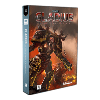
Release Date: 18 JUL 2019
Genre: StrategicReleased: 9 AUG 2019
Please note that this patch requires users to already be updated to version 1.02.00
Released: 1 AUG 2019
Changelog:
For the full list of changes, the changelog can be found here.
Reviewed: 16 NOV 2018
Wargamer Review
"Armored Brigade is overflowing with wargaming goodness"